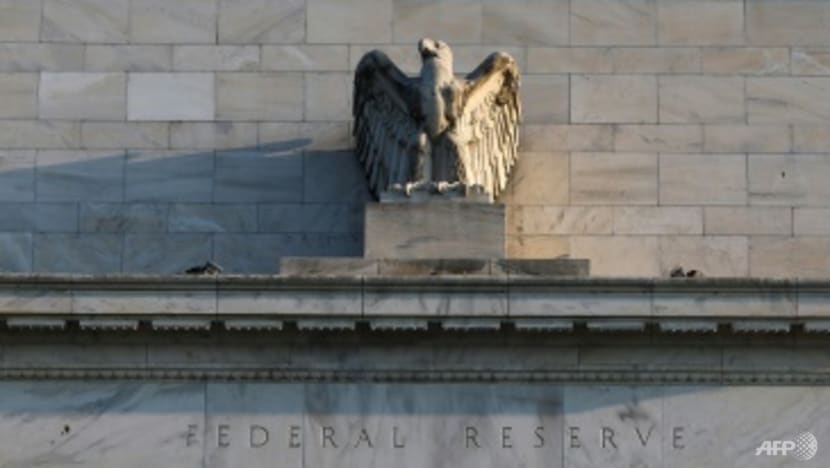Federal Reserve slows rate hikes but economists not confident of soft landing
Some analysts say a recession seems inevitable next year.

US inflation data and the Federal Reserve's policy decision are key focus points for investors this week (Photo: AFP/Kevin Dietsch)
SINGAPORE: The United States Federal Reserve is hoping to cool rising prices and curb inflation without triggering a recession, but economists are less confident that the central bank can pull off a soft landing.
Some analysts say a recession seems inevitable next year.
“Unfortunately, we don't share the Fed’s view that there will be a soft landing, and we think that the tightening will result in mild to moderate recession next year,” said Mr Brett Ryan, a senior economist from Deutsche Bank.
“In our view, where inflation is coming from and how restrictive policy needs to be in order to guide it back towards target, will basically necessitate causing a recession,” Mr Ryan told CNA’s Asia First on Thursday (Dec 15).
He said that while the exact timing is difficult to predict, his team expects negative growth in the third and fourth quarter next year, stretching into the first quarter of 2024.
Unemployment rate, now at 3.7 per cent, is expected to exceed 5.5 per cent by 2024, higher than policymakers’ forecast of 4.6 per cent.
“A few weeks ago, (Fed Chair Jerome Powell) said there is a path to bringing inflation down without triggering recession, bringing supply and demand back in line in the labour market,” said Mr Ryan.
“(But) historically, it's unlikely because the Fed has never been able to engineer a decline in job vacancies without seeing hiring rollover at the same time,” he added.
FIGHT TO TAME INFLATION NOT OVER
The central bank on Wednesday raised benchmark interest rates by 50 basis points at its final meeting for the year, taking key rates to a range of 4.25 to 4.5 per cent, the highest in 15 years.
As expected, policymakers slowed their pace of tightening as signs emerged that inflation is starting to cool. The more moderate bump of half a percentage point broke a string of four straight 75 basis-point hikes – the most aggressive policy moves in decades to tame soaring inflation.
Related:
However, policymakers are maintaining a hawkish outlook, with Mr Powell saying the fight to slow rapid inflation is not yet over.
In an effort to do more to restrain the economy, the Fed signalled it would keep rates higher through next year.
“I wouldn’t see us considering rate cuts until the committee is confident that inflation is moving down to 2 per cent in a sustained way,” Mr Powell said.
The median forecast for the policy rate by the end of next year is now 5.1 per cent, up from the 4.6 per cent peak projected in September. Inflation is also expected to remain elevated.
Mr Ryan said investors are not surprised by Mr Powell’s hawkish message.
“(Powell) wanted to shift the narrative from some of the good disinflation and deflation that we have seen recently, as separate from what they see as the portion of inflation that is most important to them – which is core services inflation, excluding housing, and that depends on the labour market and on wage growth,” Mr Ryan said.
EFFECTS OF RATE HIKES
Mr Ryan said that one of the immediate effects stemming from the tightening policies was a cooling of the housing market, as outlined by Mr Powell in his post-meeting press conference.
Observers have seen a sharp decline in housing transactions and existing home sales, with mortgage rates rising more than 400 basis points alongside the Fed funds tightening.
Prices are likely to continue to cool in the housing market, he added.
Related:
Mr Ryan said that one of the Fed’s top priorities is to prevent inflation expectations from becoming entrenched, and avoid a scenario similar to the great inflation of the 1970s and 1980s, when the Fed had to engineer larger increases, larger tightening and deeper recessions in order to guide inflation back on target.
The Fed is also trying to reduce labour demand to keep wages and core services inflation in check.
“At the moment, what Powell and company are trying to do is to slow labour demand … to prevent a labor market that is extremely tight … that’s fueling wage growth in excess of productivity, putting upward pressure on inflation,” he said.















